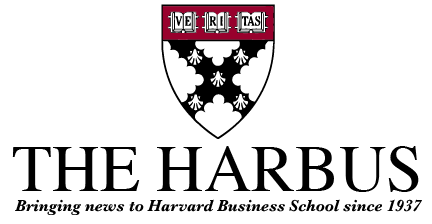Bruce Claflin, President and CEO, 3Com Corporation tells the story of his company’s turnaround.
Bruce Claflin took over the helm at 3Com during a particularly turbulent time in the company’s history. In early December 2000, a month before Claflin assumed the role of President and CEO, 3Com issued an earnings warning that caused the company’s stock to plummet from a recent high of $20 to $7.
“I wouldn’t wish this start on anyone,” Claflin reminisced. It was clear to him that he needed to make “risky, unproven, unpopular” decisions to turn the situation around. “[the role of] a CEO hasn’t changed in 30 or 40 years,” explained Claflin, “except when it comes to the dealing with order of magnitude increases in the rate of change” of the competitive landscape.
Claflin outlined his action plan for putting 3Com back on the road to recovery. First, he set about assessing what exactly was going on in the company’s key markets. He soon realized that without drastic action, 3Com would burn its cash reserves and be out of business within months.
In late December 2000, Claflin announced to analysts that for the next two quarters, 3Com would not post profits, and that the company would immediately reduce its cost base commensurate with the “broad, deep, and sustained” slowdown that it foresaw.
“At the same time, Cisco held an analyst conference to say that there was no slowdown [evident],” recalled Claflin. This difference of opinion with such a bellwether stock as Cisco further complicated relations with the investment community.
Next, Claflin set about constructing a strategy to “survive, then thrive.” He set a target to achieve $1billion of cost savings in ten months. Manufacturing capacity was slashed, capital expenditures were reduced by 80%, and working capital was reduced by half. “We killed all projects that had no demonstrated path to profitability,” Claflin added.
Communication of this new plan to all of 3Com’s stakeholders was an essential part in ensuring success. Cognizant of the short shelf-life of goodwill arising from promises to turn the company around, Claflin took it upon himself to “talk candidly and regularly” to the employees. He established an electronic messaging system so that employees at any level of the company had a direct communication channel to the company’s senior management.
He also attempted to woo the investment community by avoiding “happy talk” at road shows, forecasting a cash balance of $1billion by November 2001, and a return to profitability by June 2002.
“We axed our glossy annual report, saving half a million dollars … instead, I wrote a letter in plain English to our shareholders outlining exactly what happened,” Claflin explained.
Once his recovery plan was underway, Claflin set about restoring employee confidence in the company. “3Com has been through rough patches before,” said Claflin, “though this plan is still work-in-progress.”
Pent up demand, combined with strong market conditions in Europe have translated into better than expected results for the most recent quarter. 3Com achieved $1.2billion in cost savings (compared to a forecast $1billion). The company has gone from 12,400 employees to 5,800, has closed two out of its three manufacturing facilities and outsourced 70% of its production.
“We expect to have $1.4billion of free cash and no debt by November 2002 … I have complete confidence that the company will turn around,” concluded Claflin.
Matthew Szulik, CEO of Red Hat, outlines why conventional, proprietary operating systems are outmoded.
Red Hat is the leading distributor of the free, open source (as opposed to proprietary) Linux operating system. The company reported its first profitable quarter in June 2001. “Worldwide, we have 20-30 million users of licensed Linux software,” explained Szulik. Operating in an environment in which proprietary operating systems have been the standard model for over thirty years, Szulik believes that web-based computing has made the cost of maintaining barriers to entry too high. “Technical barriers to entry are no longer defensible …look at IBM’s $1bn investment in open source technology,” remarked Szulik.
Red Hat spends between 18-20% of its sales on research and development. With open source technology, development cycles are dramatically shortened. “Every 90 days we can release a new version of Linux that is a quantum improvement over the previous versions … some of our competitors take four or five years to release a new product,” Szulik wryly explained. Contributions for code come from all around the world, from individual programmers to organizations such as NASA, the NSA and the CIA.
The key to the success of open source technology is accountability. A community of users work together to produce a “wonderful, technically integral product,” concluded Szulik.

